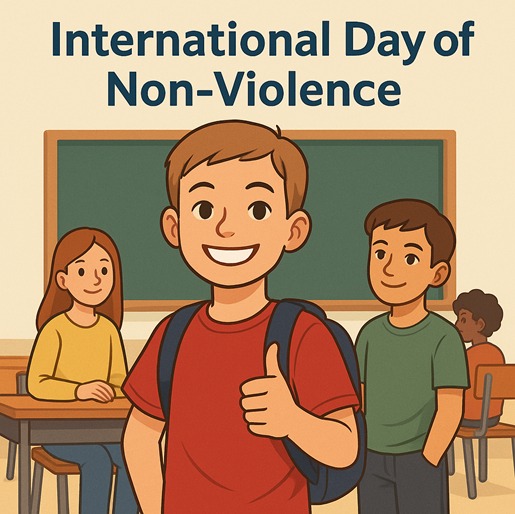International Day of Non-Violence
It is well known that violence destroys lives, and that those who suffer from it in childhood carry its consequences throughout their entire lives. However, today we know that there are indeed ways to eradicate violence in schools. On the occasion of the International Day of Non-Violence, we will talk about an educational action that has already proven successful in putting an end to bullying in many classrooms in an increasing number of places: the Zero Violence Brave Club Violence (ZVBC).
One of the greatest obstacles to stopping violence is that bystanders do not dare to confront the aggressor, for fear of becoming their next victim. That fear is real, because aggressors also attack those who defend their victims, exercising isolating violence. Moreover, they gain the support of people who submit to their violence. In this way, the victim is left isolated.
The ZVBC changes this dynamic: it protects both the victim and those who defend them. In schools where it is implemented, students who stand up to the bully receive recognition from the entire class and are called “brave”. Seeing the social success achieved by defending the victim, more classmates are encouraged to act, breaking the silence that protects the aggressor. According to a recent scientific study published in a high-impact neuroscience journal, it was common for students to complain of stomaches before the implementation of the Zero Violence Brave Club, but a sudden decrease in such complaints was observed once the classroom became a positive and supportive environment
The key to success with this initiative is that the brave are seen as desirable, as people to have fun with, not only as “good people.” It is known that there is a dominant coercive discourse that pressures girls to feel attracted to boys who display violent behaviors (bad boys). This discourse appears in TV series, social media… but also in interactions among students and between teachers and students. For example, when a teacher says that the child with violent attitudes is “clever”, they are making him attractive. Or when a group of teenage girls pressures one of them to go out with a violent boy “for fun”.
The ZVBC turns this dominant coercive discourse around: it promotes classroom interactions that make those who are brave desirable and admirable, not those who use violence. This is done through the language of desire (“this boy is so much fun”; “how brave you were to defend that person”), not the language of ethics (“this boy is so good”; “you did the right thing”). When teachers and students reinforce the brave using the language of desire, and stop giving prominence to the aggressor by telling them that what they do is not liked and that they cannot be part of the club in that way, the aggressor loses status. Therefore, if someone with violent attitudes wants to regain the recognition of the group they once had and be part of the ZVBC, they have no choice but to change their behavior. If they truly change their conduct, every time they act bravely and non-violently defend victims, only then will they recover the prestige and attractiveness they had lost.
The children who participate in the ZVBC experience that, thanks to the stance of the brave, it is possible to live in an environment free from violence and coercion, where true friendships flourish. Moreover, they learn that it is possible to create environments where success belongs to those who confront violence, not to those who exercise it. This makes the goal of achieving a world without violence increasingly closer. A 10-year-old once told me: “The day there is a Brave Club in the world and everyone is brave, violence will cease to exist.”
Primary Education Teacher.
Currently working on his doctoral thesis at the Universitat Rovira i Virgili (URV).


